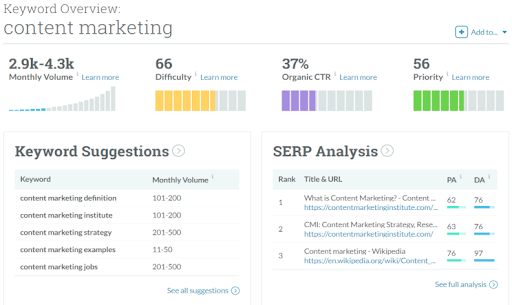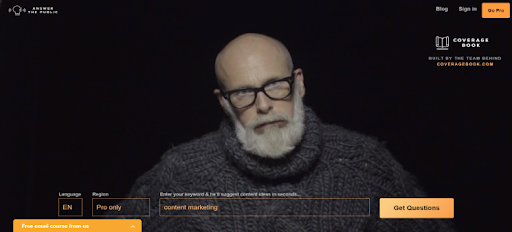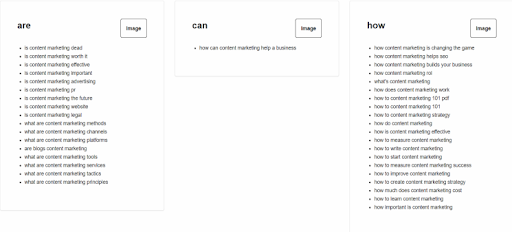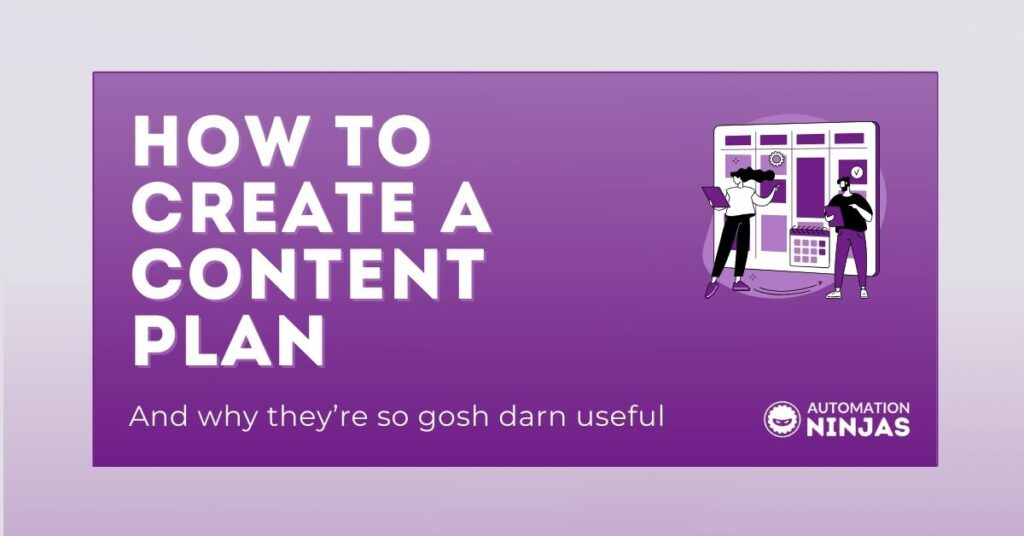AUTHOR: Kenda Macdonald
As a dedicated consultant, I specialise in elevating businesses through top-tier consultancy, fueled by a deep understanding of buyer psychology cultivated over years of experience. My expertise lies in crafting marketing and sales strategies that propel businesses to new heights by leveraging insights into the buyer brain. As a bestselling author, public speaker, and strategist, my passion for decoding human behavior drives me to innovate and deliver unparalleled results. I've designed a methodology adaptable for all types of businesses, ensuring transformative customer journeys and experiences.
Wait, what? ...is often the first response we get from marketers when we ask them about the content plan underpinning their content marketing.
But you've got to have a plan right? Because without a plan - an approach backed by some measure of logic or reasoning, you're just flailing around in the dark.
The conversation goes down hill from there.
The absence of a plan usually is the result of one of two misconceptions.
1. As long as you're creating content, it's all good.
2. Blogging about yourself/your organisation and the super rad pie eating contest you all attended last month counts as valuable content.
In fact this last one really gets our panties in a bunch but it's probably the most common because it's founded in an even greater misconception that goes well beyond content marketing and sums up the biggest challenge in marketing.
If we don't talk about ourselves how will the client/prospect/candidate know anything about us?
It's usually at this point someone in the Ninjas office starts sobbing uncontrollably.
They might know nothing about you. This may be their first time on your website. This may be the first time they've ever heard of you.
So first impressions count.
Would you rather your brand new prospect be dazzled by how helpful your content is in addressing their needs, or by how many pies Jenkins in accounts managed to stuff down his throat?
Don't get me wrong - we all love a bit of corporate social responsibility and if said pie stuffing was for charity then fairs do's. But it can't be the only thing on your blog and it can't be one of a never ending series of blogs where your organisation pats itself on the back for being...well, just swell.
The reason? The overwhelming majority of your audience doesn't care.
A really loyal customer will smile wryly at people he's worked with making total fools of themselves and then carry on with her day. It won't make them pick up the phone and commit to service or product. It just doesn't work that way.
Unfortunately for you - and luckily for your customers - any old content won't do.
The Search for Relevance
For your content to be at its most effective it needs to be well written, engaging and relevant. Relevance is everything. If the content you're creating is irrelevant then what's the point in creating it in the first place?
There are definitely far more fun ways of wasting time and money than writing crap content about nothing in particular. It needs to serve a purpose.
Of course the only way to know if your content is or will be relevant is to do some research.
Research is a broad church and it's easy to get lost on all the various measures available to businesses and marketers.
As Tolkien once wrote:
There is nothing like looking, if you want to find something. You certainly usually find something, if you look, but it is not always quite the something you were after.

Whichever way you choose to interpret these wise words the message is the same: whether you're looking in the right place or the wrong place, you'll be surprised at what you'll find.
Creating a content plan begins with looking in the right places for the information you need to create relevant, valuable content.
This starts with talking to the relevant people (see where we're going with this).
Knowing who to talk to is everything.
Whether you're selling high heels or high end software you need to know:
- Who the decision makers are
- Who the influencers are
- How much influence that second group can exert
- And what are the personas within each of these groups
You don't talk to CEOs. You talk to CEOs in three different generational groupings. They fall into multiple demographics, all have come to business and success in different ways and each have their own challenges.
The fact that solution is the same doesn't matter quite as much as how you communicate that solution to each of those personas. Understanding them and their needs, wants and aspirations is the first big step towards formulating a content plan.
It gives what comes next a context. I won't lie, it's a big job but to understand who you're talking to is invaluable. It creates solidarity and trust. Far more than Jenkins and his pies.
Rise of the Machines
Okay, so you know who you're talking to. Rad. High fives and fist bumps all round.
Now you need to figure out:
- What keywords you are showing up for
- What keywords do you want to show up for that you currently aren't
- Which of those have good search volume
- What is your audience specifically searching for with regards to those keyword terms.
Easy right?
Actually, on this occasion, it kind of is. It's just a little bit time consuming. But none of the best things in life happen quickly. No matter what the statistics say...
There are three very techy tools readily available that allow you to achieve all of things and best of all they're free. Well almost.

Google Analytics and Search Console
Good old Google to the rescue!
Google Search Console is an invaluable tool - especially for those running paid search ads because it gives you all sorts of useful nuggets of information that Analytics either can't or can't easily.
But I digress...
Google Search Console is able to tell you what keywords you're currently ranking for. This can sometimes be a pleasant surprise or a waking hell depending on what it throws up.
If you're being ranked for a raft of irrelevant keywords alarm bells should be ringing and now is the time to figure out why.
Best case scenario - your content is so woefully adrift that Google thinks you do one thing when actually you do another. That is fixable.
Worst case scenario - you've been hacked and someone is using your website to sell Viagra and Vicodin.
Assuming all is well and you're being found for a smattering of relevant keywords you're in a position to understand what kind of search volume you're getting.
Google Analytics offer a similar tool within Acquisition and - funnily enough - the search console sub-menu. Click on Queries and it'll give you the search terms you've been found for.
It's not quite as useful as Search Console but they sometimes throw up different results so it's useful from that point of view.
MOZ
Moz is an awesome tool. It's premium features offer site audits, keyword research and page optimisation insights for any internal marketer, no matter the size of your organisation, it's dead handy.
If you opt for the freemium version you'll still have to create an account but that's no great hardship.
The great news is that the free version still gives you a tonne of useful insights when it comes to keyword research.
An obvious question is why bother? The answer is equally obvious - so you know if you're wasting your time or not.
You can write the most incredible blogs in the world but if no one is searching for the topic then it will go unread.
This is where Moz comes into its own. Take the example below...

Content Marketing has between 2,900 and 4,300 searches conducted in the UK every month according to the monthly search volume result. As you can see from the keyword suggestions it tells us the kind of things people are searching for. Content marketing definition suggests that there's more than a few people out there who are searching for some guidance.
A difficulty score of 66 means that any content we write will be competing against some fairly stiff competition (that's okay, we're awesome) and so - depending on your talents and objectives, focusing on other keywords with a good volume may be easier. But easier doesn't always mean more profitable. There is a balance to be struck.
Of course this is all industry dependent. Some industries have been slow to adopt content marketing so you may find the juiciest keywords are ripe for the taking.
The organic CTR (click through rate) tells us how how many people click through to content based on that search. 37% may seem poor but it's actually not bad considering how fickle the average internet user is.
However if the difficulty score is low then this could also mean that there is a lack of quality content. Which is good news for you.
Finally priority is an aggregate of the other metrics. It basically tells you the demand for content based around those keywords. Again, 56 may seem low but it really isn't. To score over 80 in priority you're talking high volume, high demand consumer goods like Jack Daniels or Playstation 4.
As you work your way through your keywords you can start to see which subjects will require more effort over others. You can also try other keyword variations as well as get insight into keywords that you aren't currently ranking for but should be.
Record all your results as you'll need to refer back to them for the next bit...
Answer the Public
We love Answer the Public because it's made of magic and distilled awesomeness. Well, actually it's made using a very sophisticated algorithm that crawls Google for you. But it's so good it should be made from magic and distilled awesomeness.

Answer the Public - aside from having a brilliantly grumpy bearded man on the homepage - takes your keyword (in this case content marketing) and provides the questions, prepositions and comparisons that your prospects are searching for.

A word to the wise - not every result will be relevant and not every result will make for a good blog title. There will also be some results that will be so similar that you can disregard some.
Review the results carefully - luckily you can export them as a CSV - and get rid of the ones that aren't relevant or group together questions that can be answered by an overarching title.
This is where the Fun Begins
So you've got together your content titles - backed by actual research and hard data - so now you can get down to the business of planning your content plan.

Now the trick isn't to just dump all your content into a spreadsheet and call it good. I mean, you can but that isn't really strategy and that sure as hell isn't structured.
Before you do anything, make sure you know what your objectives are. As silly as it sounds, you'd be surprised how many people fail to set objectives in order to measure the success of your content.
Without them all that happens is you'll never have a proper understanding of what content works and what doesn't.
Setting objectives with regards to your content helps you track what content generated a conversion and the value of that conversion when it becomes a sale. This gives you a true picture of what's working and what isn't. That way when someone asks if the content strategy is working you don't just stand there looking at your shoes.
Make a plan, stick to the plan, always deliver
There are two parts to a good and structured content plan. The first is dividing your content by verticals. Your x and y axis' should be service or products and persona.
This is so you can - at a glance - make sure that your content is hitting the right touch points for your business as well as for the people you want to talk to.
If you haven't developed personas yet (boo hiss) that's okay, still make sure your content touches on all of your services as you want to be able to bring your content back to how you can help.
Remember, this isn't about giving your customers the hard sell, but you still have to ask them to buy something.
The second part of your content plan is...well a plan.
So knowing which blogs you're going to write is only half the job.
You need to know how frequently you want your content to go up and when it's going to be created. You also need to be aware of what sales activity your business is doing so where possible tie content in to promote services, products or events.
You also need to consider how Google works. Google likes lots of relevant content so the more you have the more your website will appear for those identified keywords.
If you're just starting out in the wonderful world of content creation then it's important to give yourself a fighting chance. As Moz will attest, it's a jungle out there.
So flitting from topic to topic with no real direction will have limited impact on your rankings. It'll help for sure, but - particularly if you're a professional services provider - focusing on one area at a time will yield far more immediate results.
Make a single topic the focus for a month or two (ideally three if the content will stretch to that) and just write about that.
I could lie and say it'll be super fun but the truth is it'll be hard work. Unless you're a weirdo like our Scribble Ninja who enjoys writing so much I'm pretty sure his fingers are typing even when he's not near a keyboard.
But the point is it'll give your blog a vitamin B12 shot right in the tushy.
Once your content is established you can have a little more freedom but in that first instance, Google needs to know who you are, what you're about and whether or not you're credible.
This approach will have similar results if you are offering a new service or simply want to attract more traffic around an existing service.
The important thing is to map out what you're going to be writing about and when so your website gets a steady stream of newness. Google and your visitors will love it!
Got a YouTube channel? Post videos on the same day each week and create a blog post letting people know the latest piece of content is up.
Write at least one blog a week. This is a minimum. Anything less and you'll lose interest from all the wrong actors. This is very bad.
Ring fence content creation time as sacrosanct as team meetings, supervision and sports day with the kids. It has to happen or all your hard work is for nothing.
By the end of the process you want a spreadsheet that clearly maps out what you're going to be creating, which day you're going to be doing it and (ideally) when you would like it to go live.
This way you also know the direction you're moving in. Providing you've got it right, the content plan will echo activity in the wider business.
It makes it easier to create. If you know the title of the blog you're writing about next week then you will naturally start to form ideas and make a mental list of where you can do your research. Trust me, it works.
You also need to allow time for writing an accompanying email and social media copy assuming you're going to promote it through your various channels. If you're not doing this already. Start.
Right. Effing. Now.
Creating great content is one thing but creating content in a structured way that offers the most value to your clients and prospects while benefiting your business is a whole other level.
It's at this level where you can start to attract prospects to your site for years off the back of your high valuable, researched and ever green content.
This is the point where businesses that get this stuff right start to see big zero gravity moon steps forward in terms of their sales pipeline and an increase in conversion rate.
Conversion rates increase as conversion time shrinks making you more profitable.
To truly get to grips with your content planning why not get a Ninja to help you? Get in touch to discuss who we can help you. Right now.



